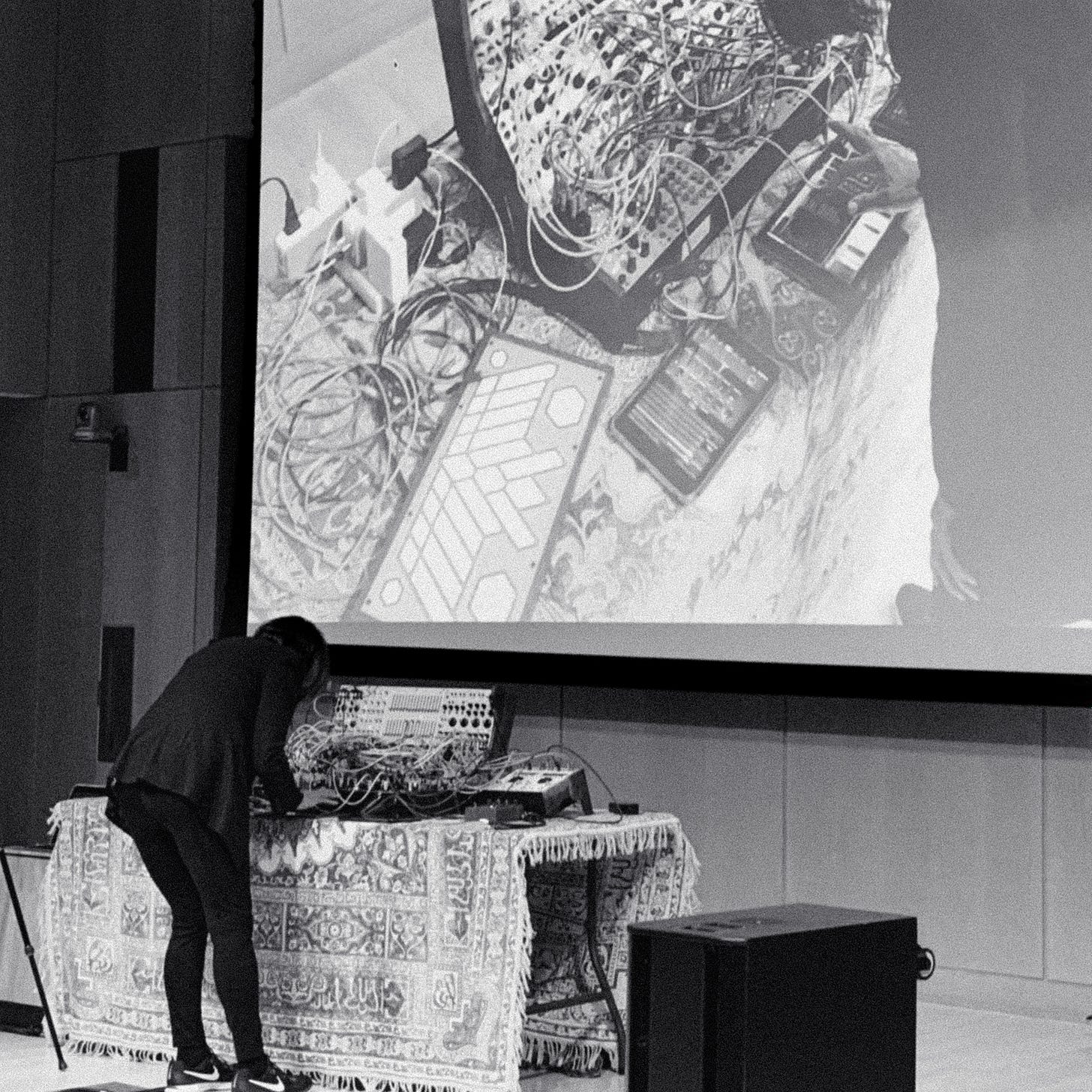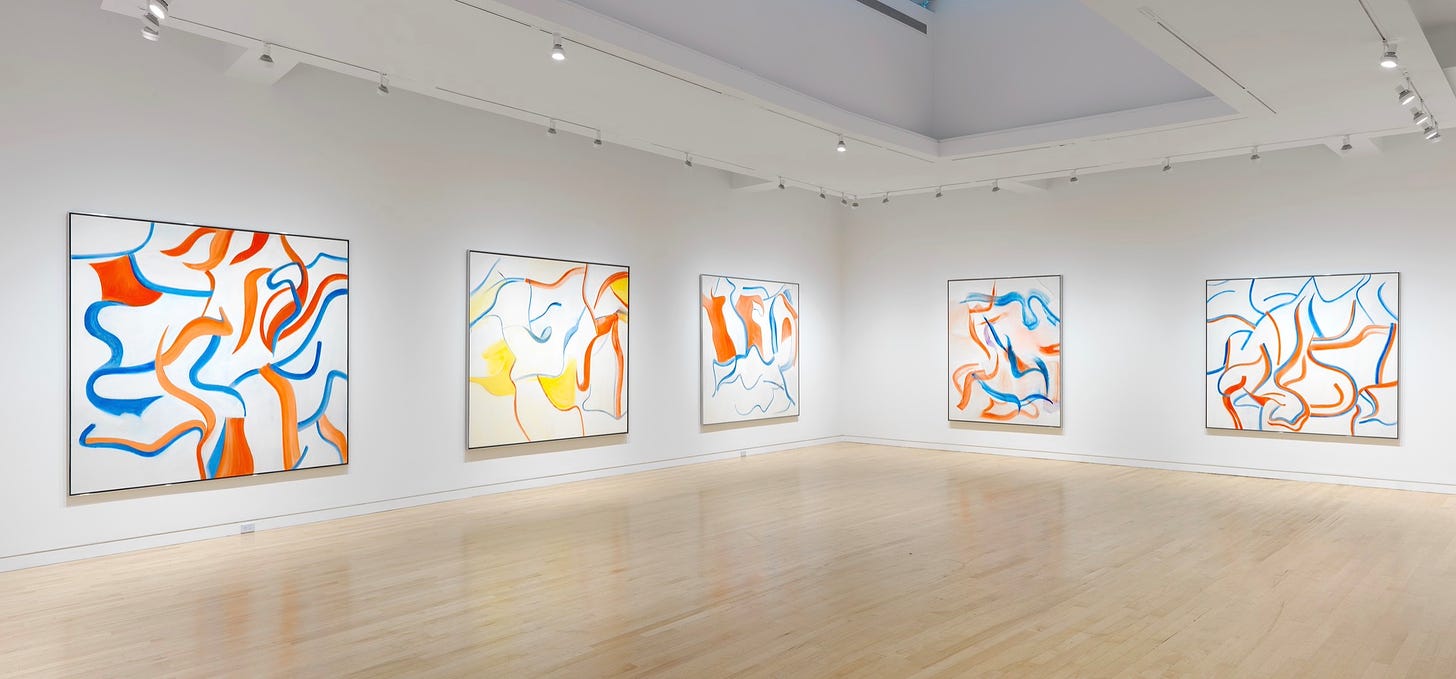Just a Little Something
Happy New Year, friends.
The last live music I went to see before the pandemic struck was a concert at Cornell University by Suzanne Ciani. Ciani is a pioneer in electronic music, a former student of synthesizer engineer Don Buchla, whose synths she still plays. (If you’d like to hear about her musical upbringing, I recommend this episode of the Lost Notes podcast.) For many years, Ciani made a living composing advertising jingles and sound effects, and issuing new age recordings. But recently her more avant-garde compositions have come to prominence, thanks to some reissues and new releases, and to a growing community of modular synthesis enthusiasts who have embraced her as a hero. (I’m one of them!)
A modular synthesizer is a electronic music-making device composed of different interchangeable parts, called modules, that create and shape sound. You might have a module with which you compose and store a run of notes, called a sequencer; this triggers a sound generator called an oscillator. The result can be filtered and processed in various ways. The modules are connected by patch cables, so an arrangement and order of modules and the positions of their controls, devised to achieve a specific sound or series of sounds, is called a “patch.” No two modular synths are the same; musicians assemble them based upon what kind of music they want to make.

After her concert, Ciani took some questions, and I asked her if she kept her synth patched in a particular way more or less permanently, or if she pulled the cables entirely and started over every now and then. How improvised, in other words, was her improvisation? Her answer surprised me. I’ll quote this recent interview in The Caret, where she says something similar to what she told the Cornell audience:
Are all of your performances improvised?
Yes. They're in the moment. But when you improvise you have to have materials that you are improvising on. You have to have a framework. For me, it’s four sequences that I used in the '70s, so they don't define very much, because music from the '70s is nothing like the music I'm doing now. But the raw material is the same.
If you listen to Ciani’s early work set against her most recent, you might recognize them as products of the same creative mind, but they’re drastically different in tone and style. Unless your musicological radar is unusually strong, it wouldn’t occur to you that they’re derived from the same four sequences of notes.
I’m reminded of the beloved but somewhat-controversial late paintings of Willem de Kooning. In his declining years, de Kooning suffered from dementia. He was able to paint only with the help of studio assistants, whom some critics suspected of doing the work for him. Were these paintings “real” de Koonings? Amie Wallach addresses the question in this Times piece on an exhibition mounted not long before de Kooning’s death in 1997:
Robert Storr, a curator in the painting and sculpture department at the Modern in New York, exhaustively interviewed de Kooning's studio assistants, examined photographs and films of the artist painting, and, with Mr. Garrels and a panel of experts that included Jasper Johns, studied the paintings themselves. Mr. Storr's conclusion is that, except in the late 80's, when the assistants projected old drawings onto new canvases and traced them in so that de Kooning had something to fight against and cover over, as was his custom, they had no hand in the work, though they did lay out colors for him.

It’s perhaps a given that all artists repeat themselves. For some writers, variations on the same material are a career imperative—take, for example, any author of series mysteries. This isn’t a slight—I love to watch a writer I like go back to that well. Sometimes the minor changes that time imposes on the artist can result in exciting new directions for old material.
We’re so fond of small variations like this that we’re starting to train software to mimic it. Listen here, as OpenAI Jukebox attempts to complete John Denver’s “Take Me Home, Country Roads” over and over, based on its analysis of the real recording:
One of my favorite exercises I’ve ever given myself was inspired by a marketing blurb on the back of a household copy of The Cat in the Hat, which marveled at Dr. Seuss’s ability to create a masterpiece out of just 220 words. (Unpopular opinion: The Cat in the Hat is bloated. The board book is better. Or maybe I’m the wrong person to ask, I’m a Hop on Pop man.) I wondered what I could make out of the same 220.
“Put on mother's new gown,” I said.
“Not—”
“Yes,” I said. “Now.”
Sally did, then let it fall. I got wood.
“Oh my,” I said.
“I like to be wet.”
“I see.”
We did it then, in the hall, near the fan. I gave it to her like she asked—fast and deep. The things we did! I bit.
Sally said, “Hit me!”
“No, I cannot.”
“Do as I say!”
I did it but I did not like it.
“Oh, oh! Now! Now! Now!”
“Not yet—”
“Come!”
This story, “The Cat Text,” didn’t make the cut for the new book, I’m happy to say. For a little while, I tried to assign this prompt to students, but they all basically came up with what I did—softcore pornography, with notes of sadomasochism. I don’t know if this says more about Dr. Seuss or my students and me.
One good recent book that makes something from almost nothing is Sebastian Castillo’s Not I, in which the author takes the 25 most common English verbs and conjugates them using each of the 12 verb tenses. The result is a collection of evocative and comical first-person sentences:
I will have been corrected.
I will have had to make public apologies.
I will have done nothing out of the ordinary.
I will have said things unconvincingly.
I will have gotten a fat check for my crimes.
I will have made a private castle in the king’s basement.
I will have gone back to clown school.
I often tell students with a penchant for experimentation that, if everything is weird, then nothing is weird. Fiction with no structure to react to (or, in de Kooning’s case, “fight against and cover over”) gives the reader no standing from which to lose their footing. You don’t need much structure—just a little something to get you started.
Year-End Lists
It’s sort of a running joke with me that I can’t stand lists, especially year-end ones. The year is an arbitrary division of time! Lists are, by their very nature, conservative and capricious! Or perhaps I’m just smarting from all the ones I haven’t been featured on. In any event, here I go, contradicting myself (a sign of intellectual sophistication!) by leaving you with three year-end lists I really liked.
Synth Anatomy’s Best Hardware Experimental Synthesizers
Every Book Elisa Gabbert Read in 2020, with Commentary
Typographica’s Favorite Typefaces of 2019 (They wait a year, to let the typefaces sink in—a good policy in my view.)
Your faithful correspondent,
John


